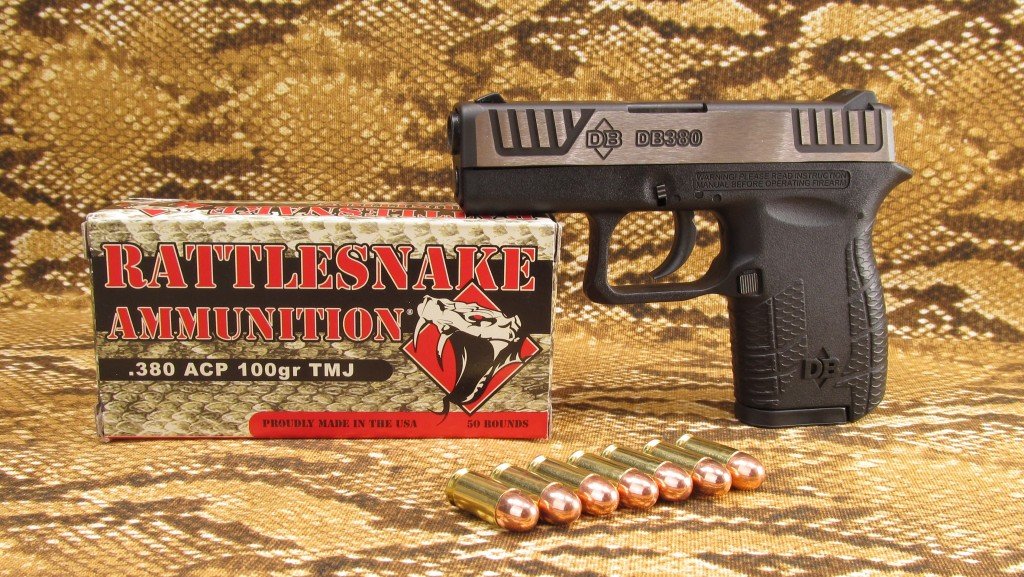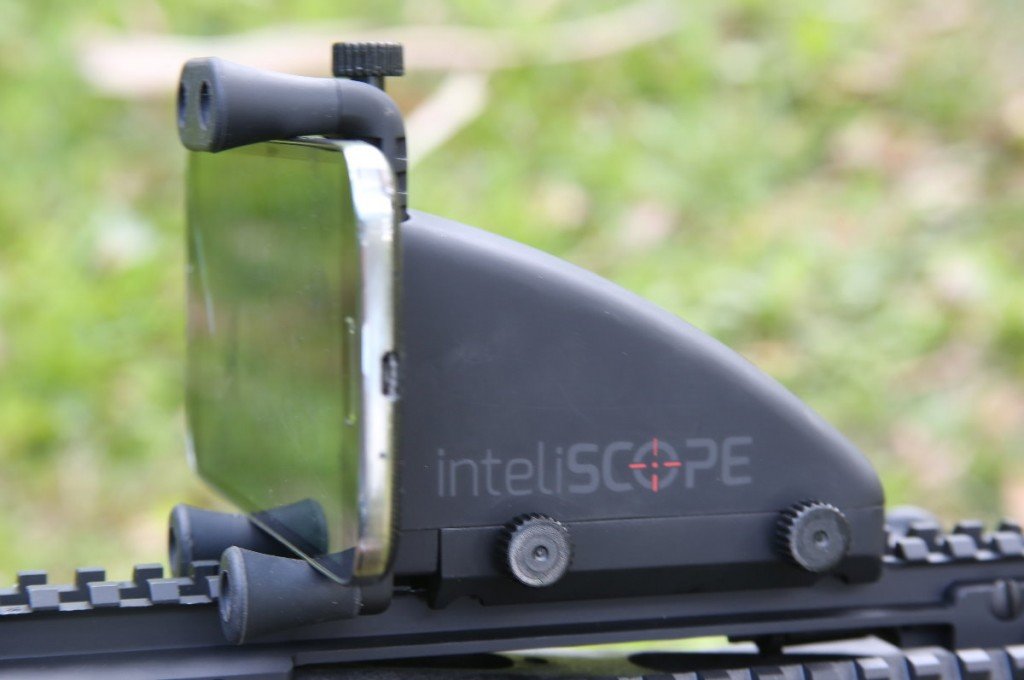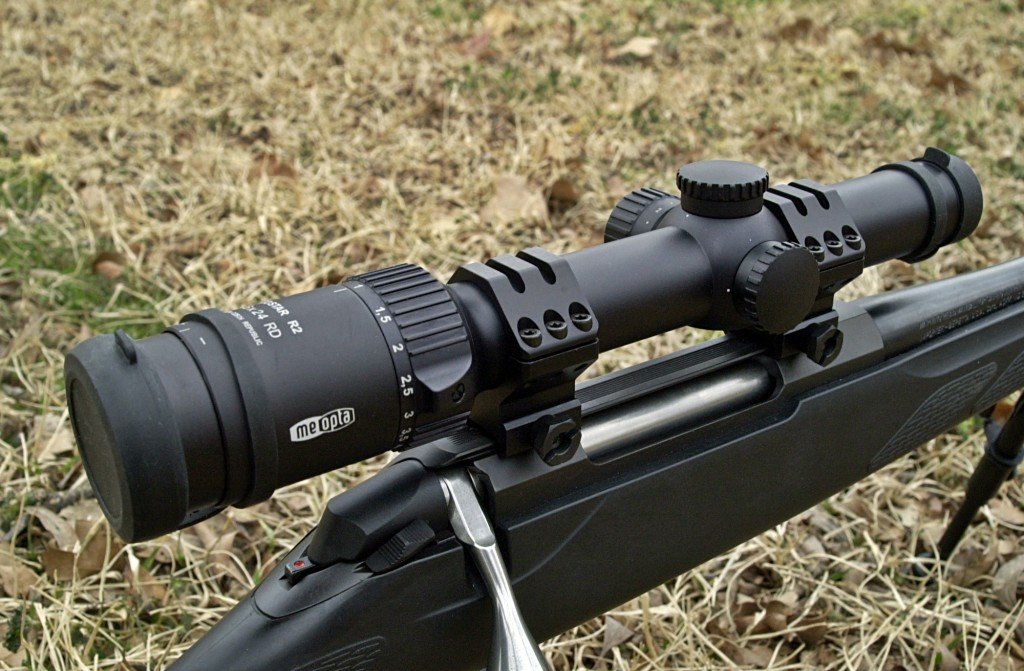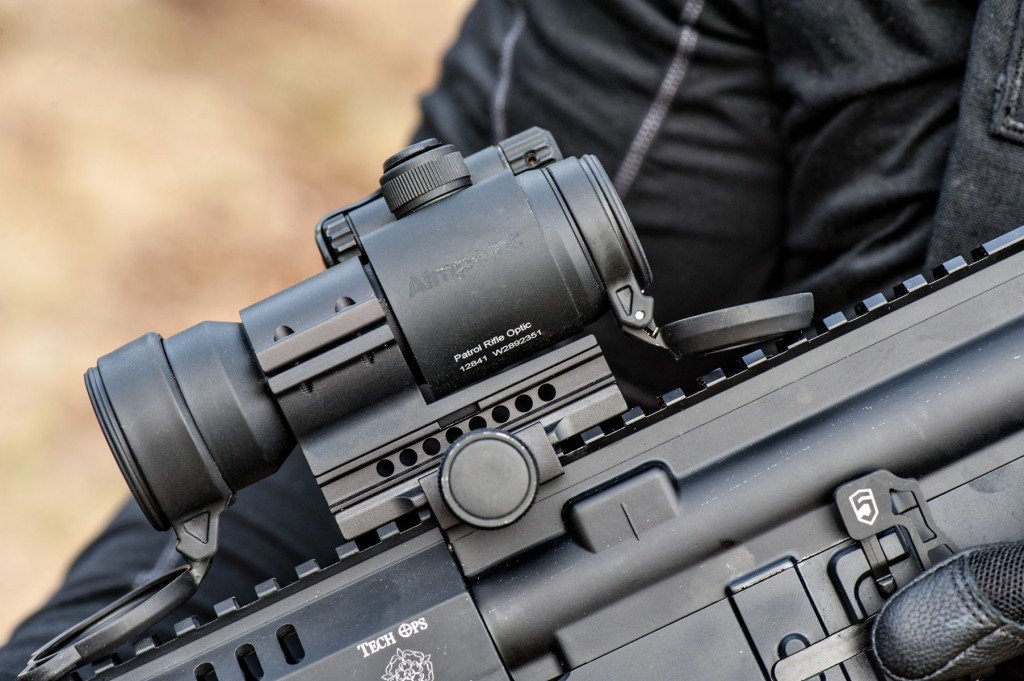In early 2010, Florida-based Diamondback Firearms released its first pistol to the US market. That pistol was the Diamondback DB380 micro-compact 380 Auto. Over the last four years, there have been many additional variations of the DB380 released. Most of the variations featured colored grip frames, different sighting systems or additional finish treatments on the slide. The latest model, the DB380SL, can be considered the second generation of the DB380 and includes several functional and aesthetic improvements to the original design.
Optics/Sights
Show First
Century International Arms C39 Classic Rifle—No ammo shortage, low ammo prices, low gun prices, 100% American made
Published: May 1, 2014 { 16 comments }If you like to shoot like I do, you’re faced with limited supplies of ammo and high costs (when you can find it). You can’t always reload either, because the most common powders are just not available. I’ve been looking for reloading powder online and at the local sporting goods stores for more than a month. Got everything else, but no powder to send the bullet on its way.
However, there is one rifle cartridge that’s in plentiful supply at very reasonable prices—7.62×39. Developed by the Soviets during WW II, it later became the cartridge of the battle rifle developed by Makhail Timofeyevich Kalashnikov. Introduced as the Avtomat Kalashnikova model 1947, better known as AK-47, the gun was adopted by the Soviet Armed Forces in 1949 and has since proven itself in 65 years of continuous service in militaries around the world.
Affordable Gobbler Guns and Gear: Tristar’s Raptor ATAC—New Shotgun Review
Published: April 17, 2014 { 0 comments }We are so lucky to live in this time when precision machinery and quality materials allow for the production of affordable guns that give up little to their higher-priced brethren. Imported by TriStar Arms from Turkey, the new ATAC Raptor Turkey gun is a great example. As an extension of the company’s low-priced Raptor series, it delivers solid performance and dependability on a proven action.
InteliSCOPE Targeting Device for Android/Apple Phones
Published: April 11, 2014 { 16 comments }This is a cup-half-full, cup-half-empty product. It all depends on the way you look at it. First of all, what is InteliSCOPE? InteliSCOPE is a smartphone holder that mounts on your picatinny rail, allowing you to use your phone as a sighting scope while providing you the ability to record video. The mount physically holds your phone on the top of the rifle, and a standard Google Play or Apple Store app does the sighting through the camera on your phone. We tried the Android version with a Samsung Galaxy S4, and it does what it says it does, with a few important caveats.
Burris C4Plus Riflescope—New Scope Review
Published: March 28, 2014 { 2 comments }When I first got into shooting there wasn’t the wide variety of scopes and reticles to choose from that we enjoy today. While the elements that make up a riflescope haven’t changed in many years, the technology and features have changed and continue to do so. I believe that we’re now at a point where there is literally an optic for just about any shooting activity to meet just about anyone’s budget. Hunting scopes probably have the largest market share when it comes to the total number of optics sold, but they also have the fewest features to offer the shooter. The typical hunting scope is a pretty simple affair with covered turrets and a simple duplex reticle for aiming. For most shooters, this arrangement works well for those shots that don’t fall outside of 200 yards across the fields or in the backwoods. However if a shot has to be pushed past that distance, the only choices are to apply some Kentucky windage and hope you know the drop of the ammunition well enough or to attempt to close the gap.
This year, Burris released a new line of hunting scopes called C4Plus that provides options for shooters looking for more versatility from their optics in an affordable package. Featuring two popular variable magnification ranges, custom bullet drop compensating knobs, quality glass and a new reticle specifically designed for wind compensation, these scopes have the potential to reach past the hunting scope market. At first glance it appears that Burris has done its homework in the design and layout of these scopes, so lets take a closer look.
Meopta MeoStar R2 1-6×24 RD Riflescope Hits it Over the Fence
Published: March 14, 2014 { 15 comments }Thanks to modern manufacturing processes, today’s rifles have accuracies of one to two minutes of angle right out of the box. However, if you want to realize that potential, you’ll need a scope that’s in the same ballpark. The hard part, of course, is deciding which of the multitude of scopes in the marketplace is best for you. After all, they all look pretty much the same. But when you look a little closer, the differences begin to emerge. I don’t generally get too excited about scopes, but as an astronomy buff and licensed optician, when I get to use an optical instrument of this caliber, it’s hard not to get excited.
Meopta, an American family-owned, multinational company with headquarters in the US, has been building scopes since 1933. Although the company is not well known here, you’ve certainly heard of some of the premium scope makers it has built scopes for. The point is, Meopta has a lot of experience manufacturing top-of-the-line scopes.
Aimpoint PRO—Advanced Technology and Durability
Published: February 26, 2014 { 2 comments }Introduced at SHOT Show 2011, the Aimpoint Patrol Rifle Optic (PRO) entered the competitive red dot market with a host of features designed specifically for the Law Enforcement Officer (LEO). Aimpoint, which has been in the red dot business since 1974, took its years of experience as well as input from LEO professionals to create an optic that is optimized for the LEO mission field and the LEO wallet. The features of the PRO are vast, and while Aimpoint has other red dot optics in its product inventory that may appear comparable, none could match the MSRP of $440.
The catch, at the time, was it was specifically made for LEO and could only be bought from an authorized Aimpoint Dealer. Of course with that kind of price point for a top-notch optic, everyone wanted to get his hands on one (or four). The general public was initially frustrated by the lack of availability, but Aimpoint wanted to make sure the LEO community was the first to get the PRO. Some civilians (like me) were able to get the PRO from other sources a few months down the road, but pickings were slim and disappeared very quickly. Eventually, like everything, the mystique of the optic and its “unobtainable” status faded away. Aimpoint now offers the PRO as part of its commercial line, available to the American shooting public. Even as we enter 2014, the Aimpoint Patrol Optic is still one of the most affordable, well-rounded and robust red dots on the market. I have used red dot optics that are lighter and smaller, but for my money it is hard to beat the PRO for what you get.
Aimpoint Micro H-1 Review
Published: February 20, 2014 { 3 comments }In 2007, Aimpoint set the bar high for the micro red dot sight (MRD), which was then new to the market. Until then, military grade red dot sights were fairly large, consisting of a wide 30mm tube with a battery compartment slung off the side. While very effective in combat and in the civilian hunting and shooting sports, they added bulk and weight to the firearm. This proved cumbersome, especially for competition shooters mounting red dots to their pistols. When Aimpoint launched its Micro Red Dot series, it took all the reliability, durability and long battery life of its proven larger red dots and crammed it into a small, light-weight package.
Originally Aimpoint had three micro models, the T-1, H-1 and R-1. All three shared the same physical dimensions, weight and operating controls, but they were intended for different applications. The T-1 was designed primarily for a military and law enforcement application, while the H-1 and R-1 were intended for the American hunter and competition shooter respectively. As the R-1 has been discontinued and the primary difference from the H-1 is the color (silver instead of black), this article will only address the T-1 and the H-1. The different specifications between the T-1 and the H-1 are their availability of night vision settings, operating temperature ranges, water resistance and color. The military and Law Enforcement T-1 has four night vision settings and is rated for operation in -50 to 160 degrees Fahrenheit. It is also submersible to 80 feet. These extra features come at a premium, and the T-1 commands a higher price point than the H-1. The H-1 looks like the more expensive T-1, but it lacks the night vision settings, has an operating temperature range of -20 to 140 degrees Fahrenheit and is only submersible to 15 feet. The H-1 also has more distinct manufacture and product markings than the T-1.
Testing the Meopta M-RAD Sight
Published: February 6, 2014 { 6 comments }Meopta’s sight called the M-RAD, or Meopta Rapid Acquisition Dot, reflex sight looks similar to many high-end reflex optics, but what stands out is that it is quite a bit smaller. At first glance, I thought it was a pistol sight but then realized it is a combat rifle setup. The M-RAD weighs 3.07 ounces (or 105 grams), compared to an EoTech XPS that weighs 8 ounces, but it is solidly made of aluminum. The unit is strong, and the reticle itself is surrounded by an aluminum frame for protection from being banged around. Weight is important because after hours or days of carrying a rifle around, you will find that trimming off every ounce you can is a huge benefit. It comes equipped with a picatinny mount that quickly attached with a lever/cam-style mount that was very effective and kept it on tight. It released easily, and seemed to keep zero well. The M-RAD is easy to operate with one simple button, and the system is waterproof and compatible with night vision technology. The extremely useful support package supplied with the sight holds everything, including tools, spare batteries and cleaning supplies for the optic. There are additional spacers to raise the sight higher for a proper sight picture, tools to adjust the sight and even a specially designed screwdriver for opening the battery compartment. Overall, this is a smaller unit that is both rugged and lightweight, and it performs well.
Leupold Announces its Highest Magnification Variable Scope Ever—SHOT Show 2014
Published: January 29, 2014 { 2 comments }Leupold has long been associated with quality scopes at reasonable price points. In the words of their founder, Fred Leupold, “the customer is entitled to a square deal.” That remains a guiding principal as Leupold continues to develop and improve their line of scopes. They had an improved Delta Point 2 reflex sight for handguns and shotguns at their show booth, but their biggest news this year was the brand new VX-6 7-42x56mm rifle scope. It is so new, in fact, that the design hasn’t been completely finalized. Here’s what we know: it’s the highest variable power scope they’ve ever made, it has their Extended Twilight lens system for increased light transmission, the MSRP will be in the $2,200 range, and they expect to start shipping scopes in 4-6 weeks.










